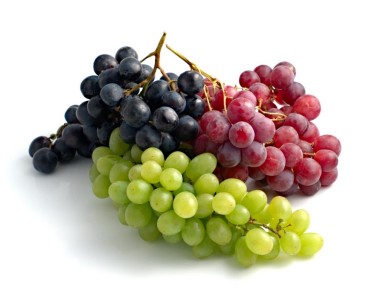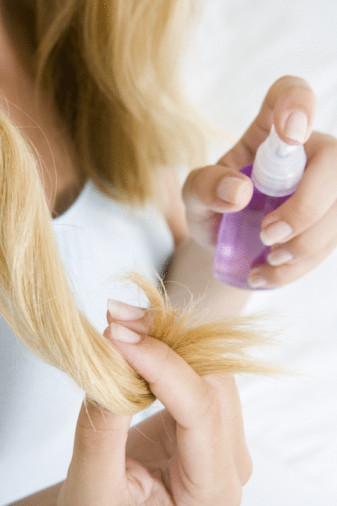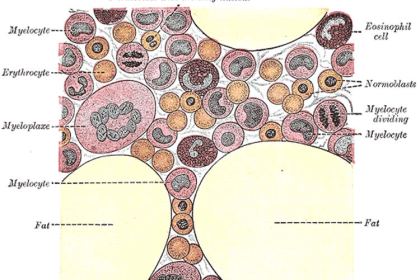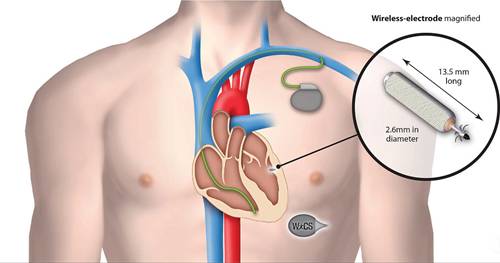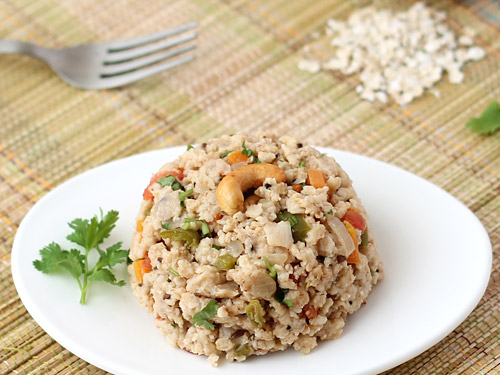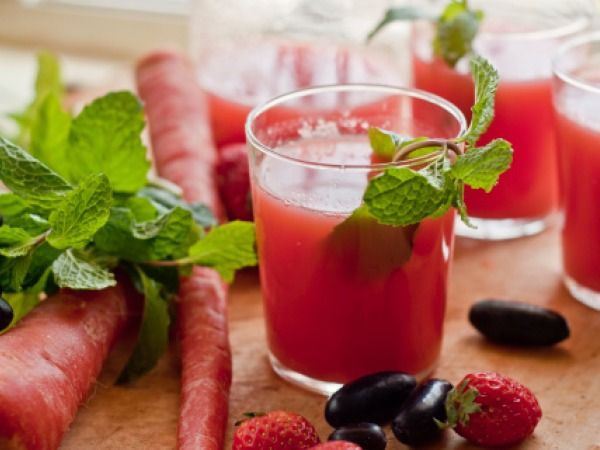
Give your body a much-deserved makeover with these healthy and refreshing juices with amazing benefits from clear skin to healthy detox.
Healthy juices are a great snack to tide you over between meals. All you need is a blender, fresh fruits or vegetables and milk. Juices will not only fill you up but are also healthy. We list out 15 top juice recipes that work well at anytime, any season.
organ cleansing detox juice recipe
Ingredients:
• 2 grapefruits
• 1 medium-sized beetroot
• 1 green apple
• 1 small lemon
• 1-inch ginger root (optional)
Method:
Mix all the above ingredients together in a blender and consume the juice immediately.
Vegetable juice recipe
Ingredients:
• Fresh cabbage (band gobhi) – 125 gms
• Fresh lemon ( nimbu ) – 1
• Celery ( ajmoda shaak ) – 25 gms
• Fresh pear ( naashpati ) – 250 gms
• Ginger root (adrak)- 1 inch
• Filtered Water – 500 ml
• Fresh Mint (pudina ) – 4 to 5 leaves
Method:
1. Chop the pear, cabbage, celery and ginger into small pieces and put it in a blender along with a cup of water; blend well for 1 minute.
2. Add the fresh lemon juice to the blended juice. Pour the juice in a glass and serve chilled with mint leaves.
Beetroot and Carrot Juice
If you love juices then introduce yourself with a nutrient-abundant beetroot-carrot juice. This juice provides health benefits from head to toe, especially for good vision. Try this juicy recipe to colour your diet with fibre, minerals and carotenoids.
Ingredients:
• 1 beetroot
• 1/2 kg carrots
• 1/2 piece of ginger (adrak)
• 2 tbsp (chopped) mint leaves (phudina)
• Black salt (sanchal) to taste
• 1 tbsp lemon juice
Method:
1. Blend all the ingredients in a mixer with some water except black salt and lemon juice.
2. Strain the liquid.
3. Pour in a glass add black salt, lemon juice and ice cubes.
4. Garnish with mint leaves.
Ingredients:
• 1 ¼ (chopped) spinach leaves (without stems and tough rib)
• 1 cup chilled fresh orange juice
• 1 ¼ cup cubed mango
• ¼ cup (chopped) fresh mint
• 2 medium ribs celery (finely chopped)
• ¼ cup (chopped) flat-leaf parsley
Method:
1. Combine all ingredients in a blender.
2. Keep blending it, until it is a smooth puree.
3. Pour into two chilled glasses and sip it.
Cabbage, Cucumber, Grapejuice recipe
Ingredients:
• 1/2 head purple cabbage
• 2 large cucumbers
• 2 handfuls purple grapes
Method:
• Wash all the ingredients thoroughly.
• Juice the cabbage, cucumbers and grapes in a juicer and drink immediately.
Watermelon Smoothie
Ingredients:
• 1 ½ cup roughly chopped watermelon
• 1 ½ musk melon (if you have some. Or you could add some more watermelon)
• Juice of 2 lemons
• 1 cup skimmed yogurt
• Some ice cubes
Method: Add all ingredients to a blender and blend into a smooth consistency. Enjoy your watermelon smoothie!
Natural Peanut Butter and Banana Smoothie
Ingredients:
• 100ml ice
• 200ml skimmed yogurt
• 1 tbs natural preservative-free peanut butter
• 1 chopped (ripe) banana
• 1 tsp honey
Method:
Blend all ingredients together, and add a little milk (if needed) to get a thin drinking consistency for this natural peanut butter and banana smoothie.
Green tea and mango splash
Experience the island winds as you sip this cooling concoction prepared with a mixture of fresh mangoes and green tea.
You can add strawberry or any other fruit you like.
Ingredients:
• 1 cantaloupe
• 1-2 Tbsp of raw ginger
Method:
• wash cantaloupe well. Slice.
• Slice of outer rind.
• You can juice the cantaloupe with or without the seeds. I juiced it with the seeds and loved it. It is a tad sweeter without the seeds.
• Juice in the ginger as well.
• Serve or chill.
Super Sinus Juice
Ingredients:
• 1 large orange or minola, peeled
• 1/2 lemon, de-seeded and peeled
• 1 medium sweet or tart apple, chopped
• 1 Tbsp fresh ginger, skin removed
• Cayenne spice
Directions:
Wash all your ingredients.Peel your orange and 1/2 lemon – and remove the lemon seeds. Orange seeds are OK, since they aren’t as bitter. Chop your apple into chunks that will fit in your juicer. You can juice the entire apple – core and all. Chop ginger into small chunks. Before you start juicing, be aware that there are two procedures for this juice. You can use just your electric juicer. Or you can use both an electric juicer and a citrus juicer: Add the citrus directly to your juicer and juice it pulp/skin and all. This will result in a ‘thicker’ juice since some of the pulp/skin juice will be extracted and is a bit thicker than pure citrus juice. Juice the citrus in a citrus juicer/squeezer separately and add it to the apple/ginger juice. This will result in a thinner, less pulpy juice. Your choice. Start juicing all your ingredients. Stir gently to swirl the flavors. Pour into serving glasses and top with cayenne. One tiny pinch to a few bold dashes will work. You can always add more later.
Almond Papaya and Banana Smoothie
Ingredients:
• 100ml ice
• 200ml skimmed yogurt
• 1 chopped (ripe) banana
• 1 cup chopped (ripe) papaya
• 5-8 almonds
•1 tsp drinking chocolate or coffee (for the strong hearted)
Method:
Blend all ingredients together for an icy cold and smooth almond papaya and banana smoothie.
Peach lychee Juice
Ingredients:
•1 (20-ounce) can lychees in syrup, drained and rinsed (or 20 peeled and seeded lychees)
•1 cup frozen and thawed sliced peaches (7 ounces)
•3/4 cup coconut water (or water)
Preparation:
In a blender, combine lychees, peaches, and coconut water; blend, scraping down sides occasionally, until smooth. Strain juice and, if desired, thin with water. Refrigerate up to 2 days (shake before serving).
Berry Green Smoothie
Ingredients:
• 1/2 cup Greek yoghurt (or normal yoghurt without whey)
• 1 cup berries (strawberries, blueberries, blackberries etc)
• 1 cup spinach
• 1 tbsp bran
• Ice cubes as required
Method:
1. Add yoghurt and spinach and blend until blended
2. Add the berries, bran and ice cubes to this and blend until smooth
3. Serve immediately
Mango Juice
Ingredients:
• 1 banana
• 1/2 cup yogurt
• 1 cup orange juice
• 1 cup ice cubes
Method:
Add 1 banana, 1/2 cup yogurt, 1 cup orange juice, and 1 cup ice cubes to a blender and blend. Now add 1 large, chilled mango (chopped) and pulse till it blends well.
Source: yahoo news
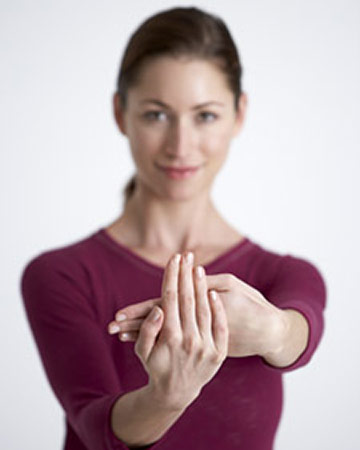 When you’re feeling tense, a good stretch can go a long way toward helping you relax. But you may not always have time to drop into a yoga class or hit the mats at the gym. Learn a few simple stretches to do on your own time, whether at work or at home, to help improve flexibility and ease mental tension.
When you’re feeling tense, a good stretch can go a long way toward helping you relax. But you may not always have time to drop into a yoga class or hit the mats at the gym. Learn a few simple stretches to do on your own time, whether at work or at home, to help improve flexibility and ease mental tension.

